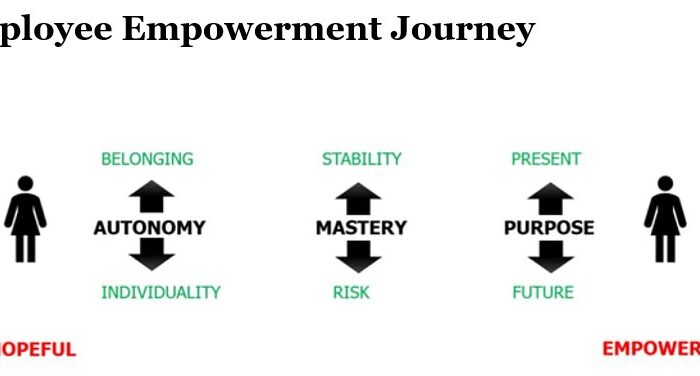Am I Ever Gonna See Your Face Again? In Blackboard Fridays Episode 95, Jacob talks about Leadership. Need this implemented into your business? Talk to the international business advisor who can do exactly that – Contact Jacob, Learn More, or Subscribe for Updates.
To Australians of a certain generation, and I count myself amongst them, the classic question from The Angels involuntarily provokes a response … shall we say, in the negative?
(Not ringing a bell? Try searching for “am i ever gonna see your face again no way”)
And admit it – sometimes you’re tempted to use that line when a team member or a client asks you for just one more favour?!
Saying ‘No’ can be the hardest thing, especially if you’ve built your reputation on saying ‘Yes’. But you know that saying ‘Yes’ to too many unimportant things … means you’re actually saying ‘No’ to the important tasks and opportunities you want to prioritise.
So How do you Say No in business? In this week’s episode, let me give you multiple options, allowing you to say ‘No’ in a way that achieves all of your outcomes.
No way…!
Who is Jacob Aldridge, Business Coach?
“The smart and quirky advisor who gets sh!t done in business.” Back independent since 2019.
Since April 2006, I’ve been an international business advisor providing bespoke solutions for privately-owned businesses with 12-96 employees.
At this stage you have proven your business model, but you’re struggling to turn aspirations into day-to-day reality. You are still responsible for all 28 areas of your business, but you don’t have the time or budget to hire 28 different experts.
You need 1 person you can trust who can show you how everything in your business is connected, and which areas to prioritise first.
That’s me.
Learn more here. Or Let’s chat.
Transcript
Good day Blackboarders. Way back in episode eight, I introduced you to some friends of ours, the three Russian Brothers and their cousin.
This was a time and task management process that I encouraged you, a sa business owner or leader, to go through to work out what you wanted to do more of in your business, what you wanted to do less of in your business, what you wanted to toss into your task management, and what you needed to get rid of.
It’s that last of the Russian brothers, the Ridov, that I want to talk about today. Because it’s actually the hardest one for us as business owners, to commit to. There’s always more we want to be doing. Actually handing over tasks, saying no, is a very difficult thing for us to do.
This Blackboard Fridays video is also really helpful for your entire team. It’s one of the ones that I encourage you to send around to your business. Because within your business you will have a lot of individuals who love you, who love the business, who love your clients, who want to do everything they possibly can.
But their efficiency, the value of their time, is being negated by the fact that they don’t know how to say no. They get asked to do something, and they acquiesce, instead of pushing back, which they know is absolutely the right thing to do. So I’m gonna walk through nine different ways that you can say no.
Check in with your feelings as I talk about each of them, which ones feel most appropriate to you. And I’ve broken them down into Passive, Passing, and Direct. Some people feel more comfortable with direct, some people want something that’s a little bit softer, whichever is most comfortable for you.
By the end of this video you’ll have one, or maybe even three or more specific tools that will help you to say no more often, which of course means saying yes more often to those tasks that add do value to your world.
Three passive approaches that I use and that I’ve got clients using. The simplest is an Out of Office. If somebody sends you a request by email,and they get an out of office, it immediately tells them that you’re not available, and you’re probably not going to action what they’ve requested, in the time frame that they’re looking for.
Completely passive, you haven’t had to do anything after you’ve turned that automatic reply on. Now this doesn’t mean you need to go on a holiday very often although I’d quite like that as a solution. I’ve got a client who works in IT.
He is often out at his clients, he is often helping his team with big intensive installation projects, he’s not checking his email on a regular basis. He has a permanent out of office turned on, that just reminds people that he is not available by email, that if it is an emergency to call the office.
Straight away it sets the expectation that he’s not going to jump and do that task. Face-to-face, sometimes an awkward pause is all that you need. Somebody comes in and says, Jacob, can you do this for me? And you just don’t respond immediately.
Often, other people will jump into that pause, jump into that silence, and they will find another solution that doesn’t involve you having to actually do it. You’ve got the outcome you want, without actually having to say anything.
The third passive is using humor. Sure, I’ll get right on that with the 25th hour in my day. Or, yeah, because I have no other pressing urgent priorities, nobody else is asking me for anything. That’s a little bit sarcastic and there are ways to do it with your own sense of humor. But it is a fun way of saying no that gets the message across, without feeling as confrontational, as direct, as you might fear, and that’s why chucked that into the passive column.
Passing on to the second column Passing. This is where you try and say no a little bit more proactive, a little bit more reason behind the rejection. The first which is obviously the simplest of the three, is well I can’t do that but have you tried Bob, Kate, Jane, Andy, Dave.
Have you tried doing it yourself, no. That would fit into the direct. This is a way of you saying no, but by coming a little bit proactively with a solution, I can’t help you but go and have a chat to somebody else who might, you manage to say no to you doing the task, without that being as confrontational.
Similarly, you can pass the blame for not being able to do that, onto other tasks that you have to do. I’d love to do that but I’ve got a presentation that I’ve gotta finish today, or I’ve got a report that I’ve gotta out of next week, or I’m going on holidays, I’ve got these other priorities. Again, just by adding a but or a because, you give a justification that makes it clear you’re not just saying no out of spite or anything animosity.
The third of these is just, and the reason it sits in the passing column, is passing the solution to a future time point. Let me check my calendar, let me check my to do list. If you have trouble on the spot saying no, this is probably the best solution for you. Because you don’t need to say no outright, you don’t need to come up with a reason, you just need to create the time for you to think about it, and to formulate that response.
Sometimes you might actually check and go, no I do wanna do that task. But if you still wanna say no, then you come back an hour or a day later, often with one of these others. I’ve checked my calendar, I don’t have the time, try Bob.
The third and final, is getting a bit more direct. This is the most powerful to be honest, if you try an awkward pause, that’s not necessarily going to work, these will be more effective, if you’re comfortable using them.
The first is a great question. What should I cancel? And this works best when you’re talking to a boss, a manager, or a client, who just keeps throwing more requests at you. You’ve given me 10 things to do, great, you’ve asked for number 11, which of these other 10 should I cancel, should I not be able to do?
By putting the onus back onto them, they more often realize that task number 11, is not nearly as important as the other 10, and they will take that off your plate. This is where scope creep and working ridiculously long hours become a pain and I don’t really feel sorry for people who get sucked into that, because it is as simple as having that conversation upfront, rather than saying yes.
Set clear parameters. If you’re going to do something, if you’re going to shake something up, if you’re going to say no, or even if you’re going to say yes but, set some clear parameters. For example, I can fit that into my scope but none of the others will be done as fast, or as well, or yes I can do that and it’s going to cost you a little bit more money.
By having that clarity of the parameters, again, you will often have the client, the manager, say actually don’t worry about that.
And the last, Nancy Reagan, the late, great first lady of the United States, who championed the drug program of the 1980s under the slogan, just say no. You see where this is going? Somebody asks you to do something you don’t wanna do, just say no.
This can be the hardest of all. The more you get in touch with yourself, the more you’re in tune to the value of your time, and the value of where you need to be investing your time, then the easier it is for you to say, I don’t want to do that, I’m not going to do that, I have more important things that I need to do, so no.
Some people will find that very, very challenging. Some people will find that very, very effective, and I’d encourage you, to be among the latter.
Next Steps
Want to learn more about how this can apply to your business? It costs nothing to chat:
- Email me jacob@jacobaldridge.com (I read them all)
- Call, Text, or WhatsApp me +61 427 151 181
- Or just Subscribe https://jacobaldridge.com/about/subscribe-to-jacob-aldridge-com/ to stay in touch




